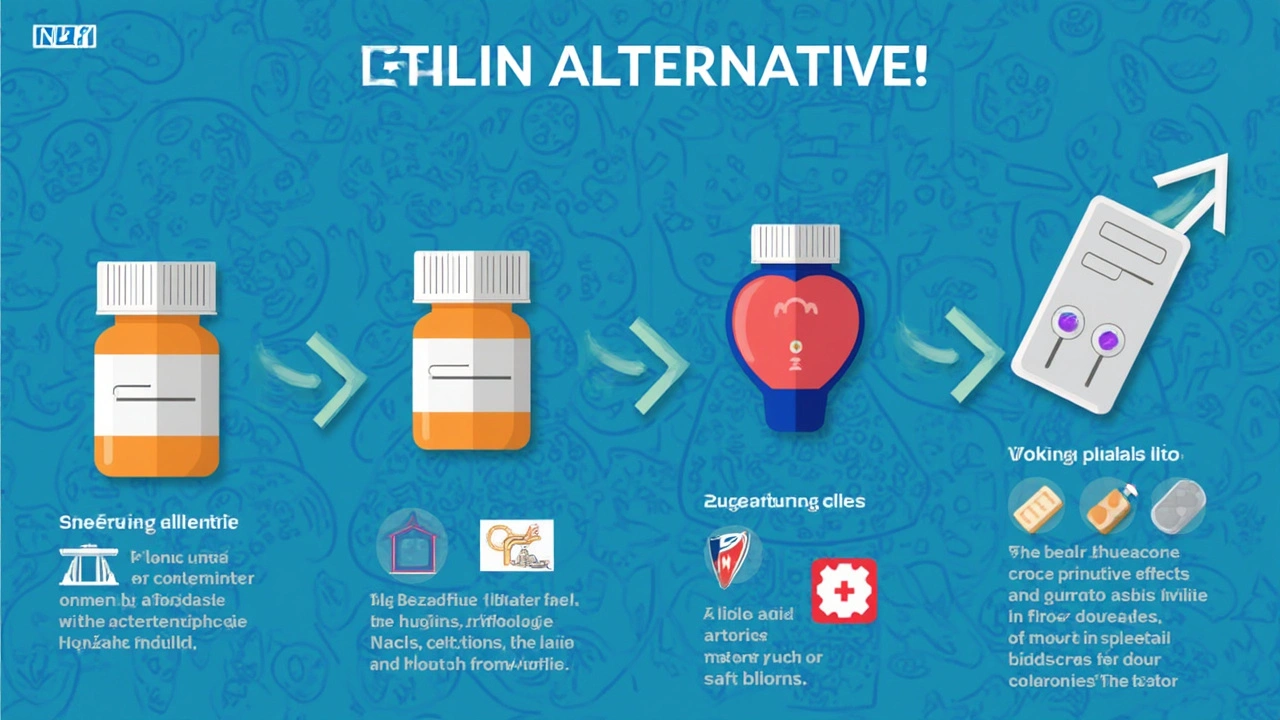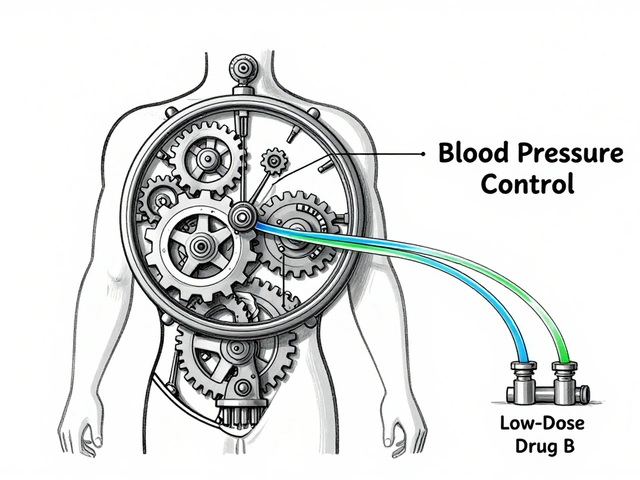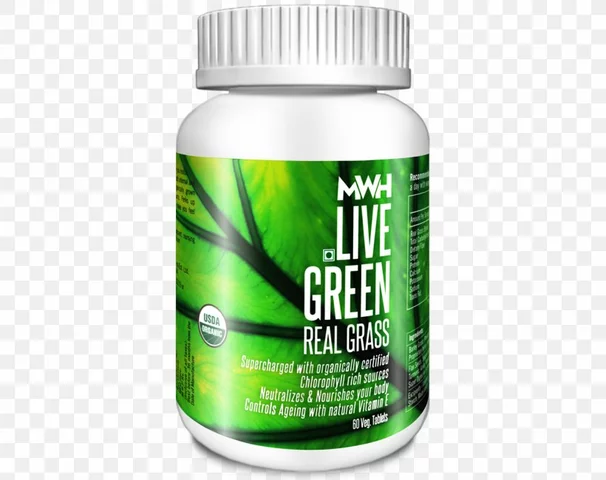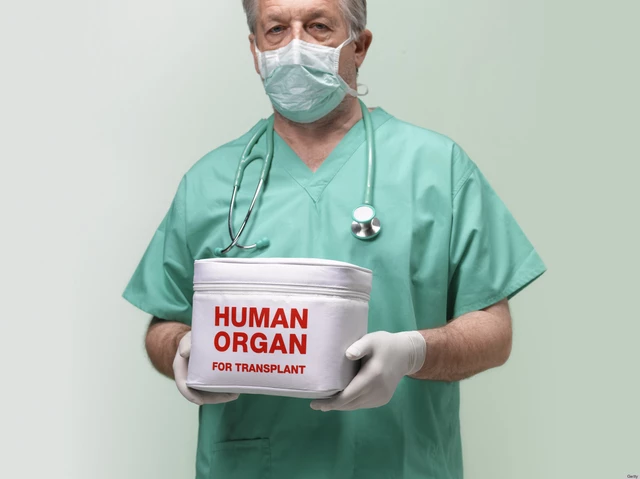Why Look Beyond Statins?
If you think statins are the only way to tackle high cholesterol, you’re in for a surprise. Yeah, statins like atorvastatin and rosuvastatin changed the game and slashed heart risks for millions. But they're not perfect. Plenty of folks battle side effects—myalgias, muscle cramps, headaches, even memory fog. Some people flat-out don’t get enough cholesterol lowering from statins, no matter how high the dose. Others have medical reasons like liver disease that make these drugs risky.
On top of that, there’s a group of unlucky genes out there called familial hypercholesterolemia, where statins alone barely make a dent. So, doctors and patients started exploring what else is out there. Enter the non-statin lipid-lowering agents—the next wave of heart protection that doesn’t start with an “s.”
As of 2025, guidelines from the American Heart Association and their European cousins make it clear: statin alternatives aren’t just backup. They’re often frontline therapy for certain folks, sometimes even combined with statins or with each other. If Rusty, my German Shepherd, could read cholesterol numbers, he’d know the market’s never been more crowded with new options.
Here’s a wild stat: nearly 1 out of every 3 patients with high cholesterol in the US now uses a non-statin option, according to a massive registry published in March 2025. That’s a huge jump from just a few years ago. The medical world is adapting, and patients who felt stuck are finally seeing change.
PCSK9 Inhibitors: The Heavy Hitters
PCSK9 inhibitors sounded like something out of a sci-fi movie a decade ago, but today, they’re as mainstream as cholesterol testing. The term “PCSK9” stands for proprotein convertase subtilisin/kexin type 9—try saying that three times fast. These are injectable meds, and they work by unleashing the power of your liver to pull even more LDL (“bad” cholesterol) out of your blood. The most famous brands on the market right now: alirocumab (Praluent) and evolocumab (Repatha).
The science is wild. PCSK9 is a protein that tells your liver cells to toss out their LDL receptors—the little doorways that clean cholesterol out of your bloodstream. Block PCSK9, and your liver holds on to way more of those LDL-munching receptors. End result? LDL levels plummet, sometimes by 60% or more in just a few months. That’s no typo. In some trials, folks started with stratospheric cholesterol (over 190 mg/dL) and got down to numbers most statin-takers haven’t seen in years.
What's the catch? PCSK9 inhibitors require shots, usually once every two or four weeks, and they don’t come cheap. Insurance coverage is getting better, but cost still limits access for many. On the plus side, nearly all patients tolerate them well—a world away from the muscle or cognitive issues you hear about with statins.
If you’re wondering about side effects, most people only report mild injection-site reactions. Maybe a sore spot or a little redness. The big studies, like FOURIER and ODYSSEY, confirmed not just huge cholesterol drops but also big cuts in heart attack and stroke risk. And according to new data from the 2024 CLEAR Outcomes trial, even people over 75 or those with diabetes get the same benefits.
One more thing: you don’t need to fail statins first to qualify. If your risk is high enough, some doctors are reaching straight for a PCSK9 inhibitor early. If you want to dig deeper, there’s a great rundown comparing each alternative to rosuvastatin and how they fit into modern care.
Ezetimibe: The Unsung Hero
Ezetimibe doesn’t get the spotlight PCSK9 inhibitors do, but it’s quietly everywhere. Approved in 2002, it’s now the second most-prescribed cholesterol drug in the world. Ezetimibe works differently: instead of revving up your liver, it blocks the absorption of cholesterol in your small intestine. Picture a bouncer at the door, keeping bad cholesterol from even getting inside your bloodstream.
What makes ezetimibe stand out is its simplicity. It’s a once-a-day pill, no needles required, and side effects are pretty rare. You might see some mild belly upset or, very rarely, a rise in liver enzymes. For most folks, it’s smooth sailing. And it’s cheap—way cheaper than PCSK9 shots—since the generic came out.
How much can it lower your LDL? Expect about a 20-25% drop, which makes it a perfect add-on to statins or a solid solo player if you can’t tolerate statins at all. The big IMPROVE-IT trial, which looked at over 18,000 patients, showed adding ezetimibe to a statin cut the risk of heart attacks and hospitalizations even more than statins alone. For many in 2025, it’s a first stop after trying—or striking out with—statins.
Ezetimibe also suits people with genetic high cholesterol or organ transplants, where drug interactions matter. It's so mild on the liver and kidneys, it hardly ever causes dose adjustments. When friends ask what I’d try if statins bothered me, ezetimibe’s always in my top two.

Bempedoic Acid: The New Kid on the Block
If you haven’t heard of bempedoic acid, you’re not alone. Approved in the US and Europe just a couple years ago, bempedoic acid takes a whole new approach. While statins block an enzyme called HMG-CoA reductase in your liver, bempedoic acid works one step earlier in the same pathway. But here’s the kicker—it’s only active in your liver, so it doesn’t mess with your muscles, avoiding a lot of the protein aches that drive people off statins.
Pop a bempedoic acid pill daily, and you can drop LDL cholesterol by about 18-22% solo, or closer to 38% when combined with ezetimibe (there’s even a combo pill called Nexlizet now). The CLEAR Harmony and CLEAR Wisdom trials, published just last year, found fewer major cardiovascular events in high-risk patients taking bempedoic acid. We're talking heart attacks and strokes down double digits compared to placebo. Not bad for a newcomer.
Side effects? The main one is a bump in uric acid, so folks with gout need to be careful. Mild rise in liver tests and some muscle aches show up for a small group, but way less than with statins. Cost is middle of the road—higher than ezetimibe but not as pricey as PCSK9 shots. Doctors also like bempedoic acid for patients with statin allergies or anyone with a record of stubborn LDL despite their best efforts.
Here’s a hot tip: insurance copays for bempedoic acid dropped in early 2025 after new generic deals went public, so it’s not just for the well-off anymore. If statin side effects or poor muscle recovery from workouts have been holding you back, this could be the drug you’ve been hoping for.
Other Emerging and Alternative Options
The list doesn’t stop at PCSK9s, ezetimibe, and bempedoic acid. Several new and revived drugs are changing the way doctors handle stubborn cholesterol. Think fibrates (like fenofibrate), which cut triglycerides as well as LDL—helpful if your numbers are all over the place. Niacin got a bad rap for flushing and side effects, but in some rare cases, it still pops up.
Omega-3 fatty acids, the ones in high-dose prescription fish oil (icosapent ethyl), slash triglycerides and, in a huge 2023 REDUCE-IT trial, cut the risk of repeat heart attacks by about 25%. They’re not first-line, but if your cholesterol cocktail isn’t enough, they’re worth asking about.
Then there’s inclisiran, which hit the US in late 2023. It’s a small interfering RNA (siRNA) drug that also takes aim at PCSK9, but with a twist. Rather than every two or four weeks, inclisiran’s injections only happen twice a year after the first month. That alone has patients and doctors intrigued—less hassle, less to forget. It’s already pulling its weight in tough-to-treat and high-risk patients.
For a quick look at how these alternatives stack up on the market:
| Drug Name | LDL Reduction | Route | Notes |
|---|---|---|---|
| PCSK9 inhibitors (alirocumab, evolocumab) | 50-65% | Injection | Best for genetic cholesterol and high-risk heart disease |
| Inclisiran | 50-60% | Injection (2x/year) | Longest-acting, easy schedule |
| Ezetimibe | 18-25% | Oral | Low cost, mild side effects |
| Bempedoic acid | 18-22% solo, 38% w/ ezetimibe | Oral | Statin alternative, no muscle aches |
| Omega-3 RX (Icosapent ethyl) | Varied | Oral | Best for high triglycerides |
Doctors are tinkering with combinations now more than ever. Repatha with ezetimibe. Bempedoic acid with statins. Even all four for people with sky-high genetic risks.
New research also hints at future drugs that target different cholesterol or inflammation pathways. CETP inhibitors and antisense oligonucleotides are getting closer to market as we speak. We could see options that go beyond just lowering cholesterol—maybe taming plaque inflammation or cleaning up dysfunctional HDL, the “good” cholesterol.
Finding the Best Non-Statin Option for You
So, who should make the leap? If your cholesterol stays high despite maxed-out statins, if side effects grind you down, or if you’ve got certain heart risks or liver issues, non-statin agents are in your playbook now.
It isn’t a one-size-fits-all world. The best non-statin depends on lots of nitty gritty: your cholesterol numbers, personal and family history, other medical conditions, even your insurance and what you can afford. Every pill or injection has upsides and quirks you’ll want to talk through with your doctor.
Here are some handy tips for choosing—or talking to your doc about—today’s non-statin drugs:
- If cost matters: Start with generic ezetimibe, and ask about recent insurance changes for bempedoic acid.
- For one-and-done dosing: Ask about inclisiran—an injection just twice a year.
- With stubbornly high LDL or family heart disease: PCSK9 inhibitors pack the biggest punch. Check if you qualify for coverage.
- If you hate needles: Oral options (ezetimibe, bempedoic acid) are rising fast and highly effective.
- History of muscle side effects: Bempedoic acid and ezetimibe don’t trigger the same aches as statins.
- If triglycerides are sky-high too: Omega-3 prescription fish oil or a fibrate might be on the menu.
One thing’s for sure—there’s never been a better time to revisit cholesterol management if your current plan isn’t cutting it. Medicine’s moving fast, the choices get better every year, and most importantly, more patients are finally getting to goal and staying there. If you’ve ever thought, “Do I have to put up with these statin side effects forever?” the answer, for a lot of people in 2025, is a confident no.







May 3, 2025 AT 22:10
Reading through the overview, I’m reminded how diverse the landscape has become for patients who can’t tolerate statins. It’s encouraging to see options that respect cultural differences in medication acceptance and accessibility. The mix of oral pills and injectables gives clinicians flexibility to tailor therapy. I hope your experience with these agents continues to be positive.